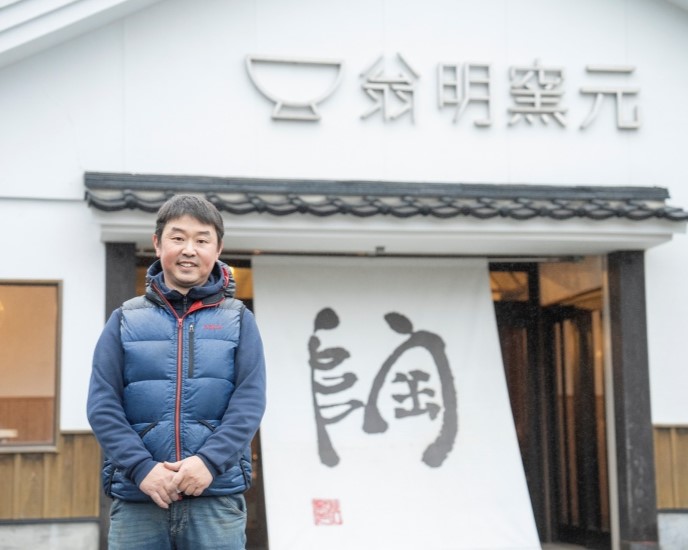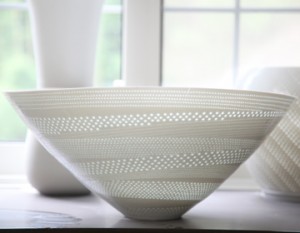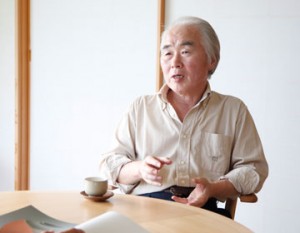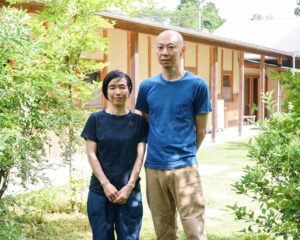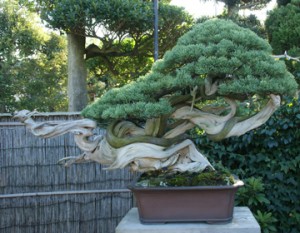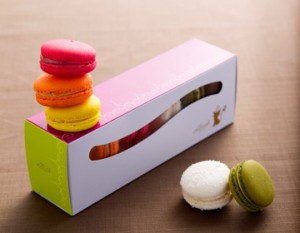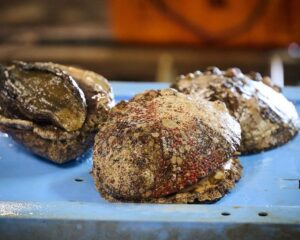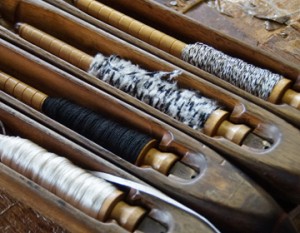Koishiwara Pottery is located in the Koishiwara area of Toho Village, Asakura County, in the south-central part of Fukuoka Prefecture. We asked Mr. Takayuki Onimaru, the second-generation owner, about his passion for making pottery.
Simple and warm vessels born in a beautiful satoyama

Toho Village, located in the Chikugo region of southern Fukuoka Prefecture, is a small village with a population of approximately 2,000 people. It is a peaceful village with three clear streams, the Hoshuyama River, the Ohi River, and the Koishiwara River, and a clear sky full of stars. Koishiwara Pottery has been produced here for more than 350 years. The origin of Koishiwara pottery dates back to 1669, when the potter Takatori Hachinojo found clay here and moved to this area. Later, the lord of the Kuroda Domain invited potters from Imari to the area, and they interacted with Takatori Pottery, which was already in the area, and the two cultures mingled and developed into Koishiwara Pottery. Koishiwara-yaki is characterized by a style that is close to daily life, and was awarded the highest prize at the World Exposition held in Belgium in 1958. The term “beauty of use” attracted worldwide attention. Currently, about 50 potteries are working to establish a new style of pottery while carrying on the tradition. O-Ming Pottery is one of them.
Onimaru’s father, Onimaru Omei, opened the kiln in 1983. Growing up watching his father working in the studio from an early age, Onimaru naturally decided to become a potter. After graduating from high school, he entered the Department of Crafts in the Faculty of Fine Arts at Tokyo University of the Arts, and later entered the graduate school of the same university. He completed his master’s degree in ceramics at the Graduate School of Fine Arts and received his doctorate in 2008. He returned home to Koishiwara in 2008 after having learned a lot.
Sublimating tradition into a modern lifestyle

When stepping into the store, one’s eye is caught by the cute polka dots combined with the “tobikanna,” a technique representative of Koishiwara-yaki pottery, in which the tip of the plane blade is applied to the vessel while the wheel is turning, and small, regular cuts are made to create a geometric pattern. The dots come in various sizes, but they all have cute designs that make you want to hold them in your hands, which explains why there are so many female fans of Koishiwara Pottery. While following traditional techniques such as “hopping planes” and “hakeme,” the pottery is easily adaptable to modern lifestyles, which is characteristic of the Omei Pottery.
Mr. Onimaru believes that “dishes are a complement to food,” and he strives to create dishes that are in tune with modern eating habits. While most Koishiwara-yaki pottery is circular in shape, Onimaru-san’s dishes come in a wide variety of shapes, including squares, rectangles, and stars, and even the same design is available in different textures, such as glossy or matte. Another reason for the popularity of Onimaru’s pottery is that he sets the prices so that his customers can enjoy using his pottery in their daily lives, making it affordable.
Creating works from a woman’s perspective

Four to five new products are introduced each year, and when a prototype is made, the Onimaru family first checks to see how it feels to use it. Akiko, his wife, serves as a good advisor. Akiko, who is responsible for the daily dining table, shares with Mr. Onimaru any improvements she feels could be made to the size, weight, thickness, shape, etc. Mr. Onimaru then incorporates these improvements into the new product. Ms. Onimaru reflected her opinions and made improvements. Only those products that are approved by the Onimaru family are put on the store shelves as new products. Of course, the family is not the only one who listens to the opinions of the staff and customers. This user-oriented approach to manufacturing has enhanced the quality of Onimaru’s products and has earned him a reputation for “Omei Pottery’s pottery is cute and easy to use.
Incidentally, Omei Kiln’s products have been sold at CPCM, a boutique directed by stylist Takashi Kumagai, and have also been used in the “JIMOTO Made” series of products developed by Starbucks Coffee, which incorporates industries and materials from various regions of Japan.
A glamorous, award-winning writer on the side.

The gallery attached to the store displays celadon porcelain works that are completely different from those in the kiln. This space was renovated after the store’s shutters were bent in a “ku” shape and the inside of the store was flooded by the torrential rains that hit Koishiwara in 2017, and the works on display are pieces that Mr. Onimaru has produced in the past.
He has been selected for the “Japan Traditional Crafts Exhibition” for three consecutive years since 2010, won the grand prize at the “West Japan Ceramic Art Exhibition” in 2012, and his works have been collected by the Musee Cernuschi in Paris, France, which is known for its collection of Asian art. His works are in the collection of the Musee Cernuschi in Paris, France, which is known for its collection of Asian art, and he has received high acclaim. In 2012, he won the grand prize at the “West Japan Ceramic Art Exhibition” and his works were collected by the Musee Chernuski in Paris, France, which is known for its collection of Asian art.
Facing Nature with Inherited Wisdom and Sparing No Effort

The Omei Pottery is gradually gaining national recognition and appears to be sailing smoothly, but Mr. Onimaru feels that there are some challenges. Koishiwara is not well known as a production area, so it is difficult to recruit people. Experienced people don’t come here. We have to take our time to train even inexperienced people,” says Mr. Onimaru. Another major issue is that the quality of Koishiwara clay is becoming less stable. At the Omei Pottery, 30 to 40% of all vessels are broken during firing, and in extreme cases, more than half of the vessels are broken. The yield rate is very low. At Koishiwara’s board of directors meetings, there are times when people say, “Why don’t you mix clay from other areas? But if we do that, “the pebbles will crack,” he says. But if we do that, it will no longer be Koishiwara-yaki. It is a very difficult problem, but I would like to persistently work with the local clay, using the wisdom and experience I have cultivated over the years, including how to make clay, how to mix clay, how to glaze, and how to bake,” he says.
Onimaru is always positive in his approach to pottery making, even in difficult times. We look forward to seeing what kind of vessels he will bring to the world in the future.



